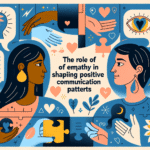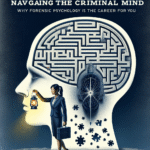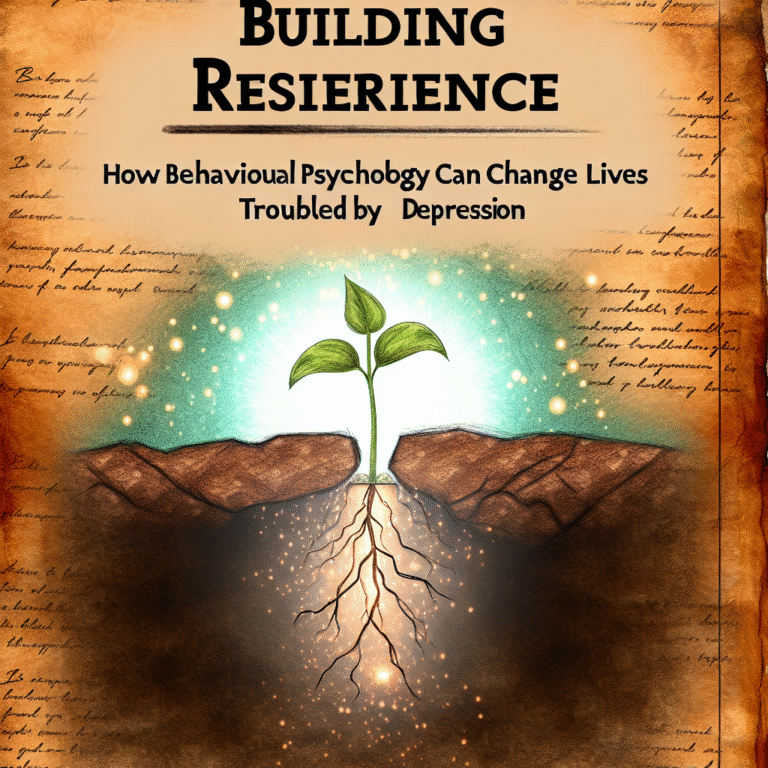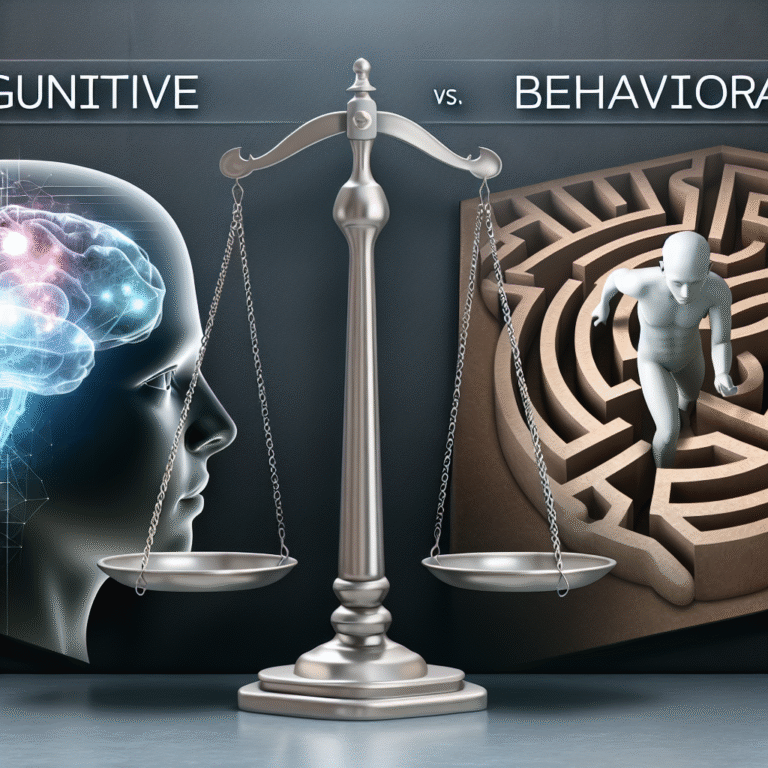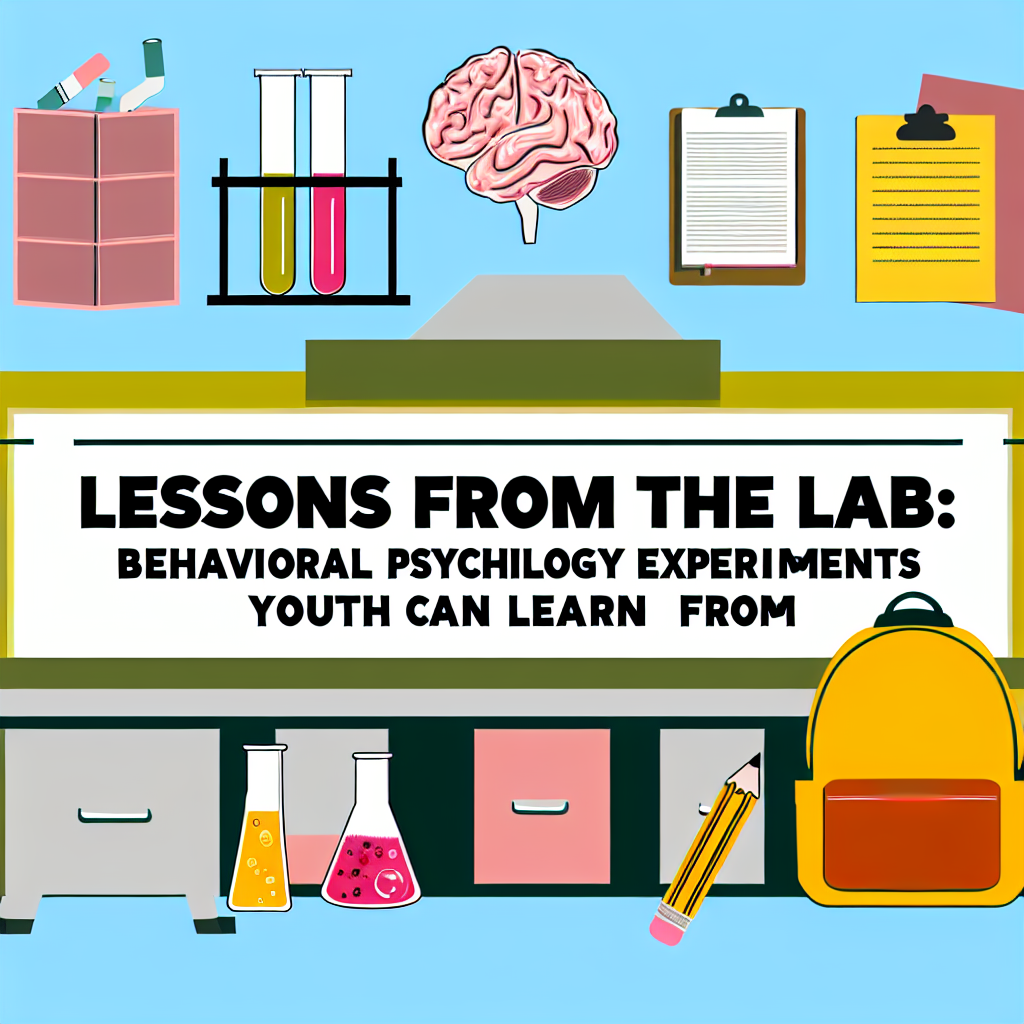
Lessons from the Lab: Essential Behavioral Psychology Experiments Youth Can Learn From
Introduction
In an age where knowledge is constantly evolving, understanding human behavior has never been more crucial. Behavioral psychology offers powerful insights into why we act the way we do, especially for today’s youth navigating a complex world. Lessons from the Lab: Behavioral Psychology Experiments Youth Can Learn From is more than just a catchy phrase—it encapsulates vital lessons born from decades of research into human behavior, motivation, and decision-making. This article aims to explore several impactful experiments that reveal profound insights about ourselves and offer actionable lessons for young individuals.
The Foundations of Behavioral Psychology
Before diving into specific experiments, it’s essential to understand what behavioral psychology encompasses. Rather than focusing on introspective aspects of human experience, behavioral psychology studies observable behaviors and the ways they’re learned. Key figures in this field, such as B.F. Skinner and John B. Watson, shaped our understanding of conditioning and reinforcement, which continue to resonate with today’s youth.
Key Concepts in Behavioral Psychology
- Conditioning: Learning through association—either classical (Pavlov) or operant (Skinner).
- Reinforcement and Punishment: How rewards and consequences influence behaviors.
- Social Learning Theory: The importance of observing and modeling behaviors of others (Bandura).
Understanding these foundational concepts sets the stage for engaging with the experiments that follow.
1. The Bobo Doll Experiment: Learning through Observation
One of the most famous studies in psychology, Albert Bandura’s Bobo Doll Experiment, provides essential insights into how youth learn from the behavior of those around them.
Experiment Overview
In 1961, Bandura observed children in a controlled environment where they witnessed adults interacting aggressively with a Bobo doll. The children were later allowed to play with the same doll, and their behavior was recorded.
Key Findings
- Imitation of Aggression: Children exposed to aggressive behavior were much more likely to display similar aggression toward the doll.
- Role Models Matter: The experiment highlighted that children imitate actions not only from parents but also from media figures and peers.
Relevance and Application
Lessons from the Lab: Behavioral Psychology Experiments Youth Can Learn From include the understanding that peer behavior influences individual actions. This is a powerful reminder for youth to choose their role models wisely. Positive behaviors often foster a supportive and constructive environment.
Takeaway
Surround yourself with individuals demonstrating positive behaviors or achievements, as these influences are etched deeply into your own behavioral patterns.
2. The Marshmallow Experiment: Delayed Gratification
The Marshmallow Experiment conducted by Walter Mischel in the 1960s has become a foundational study in self-control and its long-term benefits.
Experiment Overview
In this experiment, children were presented with a choice: they could either eat one marshmallow immediately or wait 15 minutes to receive two marshmallows.
Key Findings
- Self-Control: Those who could wait tended to have better life outcomes in areas such as SAT scores, educational attainment, and overall success.
- Implications for Discipline: The ability to delay gratification appears to be linked to various positive life choices and behaviors.
Relevance and Application
Lessons from the Lab: Behavioral Psychology Experiments Youth Can Learn From include the critical importance of developing self-regulation skills. Young people are often tempted by immediate rewards, but cultivating the ability to wait can lead to greater long-term satisfaction and success.
Takeaway
Practice delaying gratification in small ways—whether it’s waiting to purchase a desired item or putting off a quick distraction in favor of studying—this can enhance your overall self-control in life.
3. The Stanford Prison Experiment: The Power of Situational Context
Philip Zimbardo’s Stanford Prison Experiment demonstrates how situational context and defined roles can have profound effects on behavior.
Experiment Overview
In 1971, volunteers were divided into "guards" and "prisoners" in a mock prison setting. The outcomes revealed alarming behavior shifts within days.
Key Findings
- Role Expectations: Guards began to display authoritarian behaviors, while prisoners showed signs of extreme stress and helplessness.
- Situational vs. Dispositional: The experiment revealed that situational contexts could lead individuals to act in ways contrary to their normal behavior.
Relevance and Application
Lessons from the Lab: Behavioral Psychology Experiments Youth Can Learn From highlight that people often act based on contextual cues. Understanding this can foster empathy and self-awareness when analyzing one’s own actions and those of peers.
Takeaway
Recognize that behaviors may be influenced by environments and roles. Approach conflicts or negative behaviors with compassion rather than judgment, promoting understanding instead of division.
4. The Asch Conformity Experiment: Group Influence on Decision Making
Solomon Asch conducted groundbreaking research in the 1950s examining how group dynamics affect individual decisions.
Experiment Overview
Participants were asked to match line lengths and were placed in groups with confederates who intentionally chose wrong answers.
Key Findings
- Conformity Pressure: Many participants conformed to the group’s incorrect choice, even when they knew it was wrong.
- Social Acceptance: The desire for social harmony often overrides personal belief.
Relevance and Application
The Lessons from the Lab: Behavioral Psychology Experiments Youth Can Learn From derived from Asch’s experiment emphasize critical thinking against peer pressure. Youth must recognize when to assert their beliefs despite group consensus.
Takeaway
Stand firm in your convictions, especially when faced with peer pressure. Acknowledge the courage it takes to maintain personal beliefs and values, even in a group setting.
Visualizing Insights: Behavioral Psychology in Action
| Experiment Name | Key Insight | Takeaway Application |
|---|---|---|
| Bobo Doll Experiment | Children imitate observed behaviors | Choose positive role models |
| Marshmallow Experiment | Delayed gratification leads to better outcomes | Practice self-control in daily decisions |
| Stanford Prison Experiment | Situational contexts strongly influence behavior | Be aware of your environment’s impact |
| Asch Conformity Experiment | Group influence can override personal judgment | Maintain your beliefs in the face of pressure |
5. The Ultimatum Game: Fairness and Cooperation
The Ultimatum Game is a fascinating exploration of human tendencies toward fairness and cooperation, illuminating social contracts.
Experiment Overview
In this economic game, one participant proposes a division of resources, while the other can accept or reject the offer. If rejected, neither participant receives anything.
Key Findings
- Fairness Over Profit: Many participants rejected offers they deemed unfair, even at the cost of their potential gain.
- Moral Standpoints: This suggests that humans have an innate sense of justice and fairness that can guide decisions.
Relevance and Application
The Lessons from the Lab: Behavioral Psychology Experiments Youth Can Learn From signal the importance of fairness in personal and social relationships. Youth can use these insights to navigate relationships and various group dynamics effectively.
Takeaway
Strive for fairness in interactions, recognizing its importance in fostering trust, cooperation, and long-lasting relationships.
Conclusion
Understanding the nuances of human behavior through Lessons from the Lab: Behavioral Psychology Experiments Youth Can Learn From opens doors to self-awareness and personal growth for young individuals. By examining these experiments, youth can learn to navigate their social surroundings, regulate their emotions, and become more empathetic individuals. As you apply these insights, remember that the journey of self-discovery is ongoing. Embrace challenges and strive to learn from every experience, and you’ll be equipped to create a positive impact not only in your own life but also in the lives of those around you.
FAQs
1. What is behavioral psychology?
Behavioral psychology focuses on understanding the observable behaviors of individuals and how they’re shaped by interactions with the environment.
2. How do these experiments apply to teenagers today?
These experiments illustrate crucial lessons on peer influence, decision-making, and emotional regulation, offering practical guidance for navigating complex social landscapes.
3. Can experimenting with choices improve decision-making in youth?
Yes, practical experiences reflecting the principles of these experiments can enhance self-awareness and decision-making skills through reflection and learning from choices.
4. What are the real-life implications of the Bobo Doll Experiment?
The Bobo Doll Experiment sheds light on the importance of role models, reminding youth of the impact their surroundings can have on their behavior.
5. How can I motivate myself to practice delayed gratification?
Establish small, achievable goals and reward yourself for reaching them, gradually enhancing your self-control and ability to delay gratification for greater rewards.
By weaving together engaging narratives with scientific insights, this exploration into behavioral psychology serves as a valuable resource for youth. Understanding these experiments deepens the comprehension of oneself and emphasizes the need for thoughtful behavior in an interconnected world.


